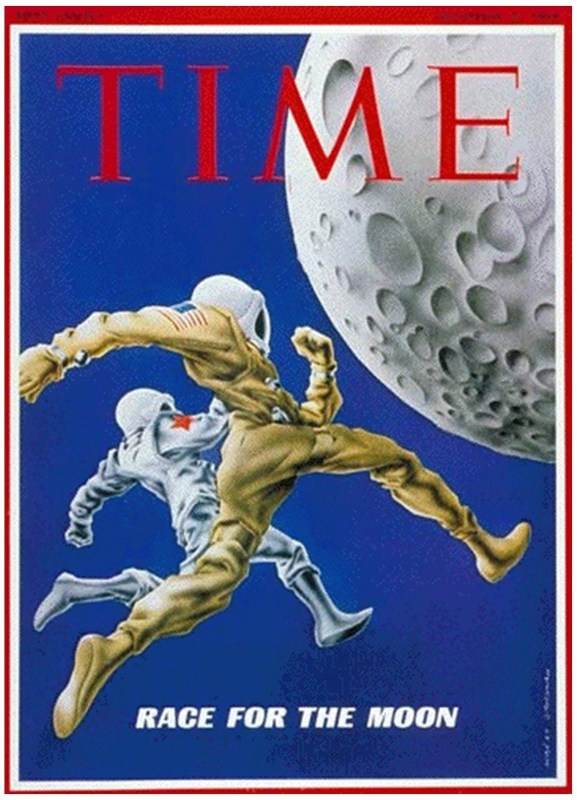Who won the space race? - Jeff Steers
1,589,725 Views
25,718 Questions Answered
Let’s Begin…
On October 4, 1957, the Soviet Union launched the satellite Sputnik and, with it, an international space race. The United States and the Soviet Union rushed to declare dominance of space for 18 years, until the two countries agreed to a more collaborative model. The real winner? Science. Jeff Steers describes the history -- and the benefits -- of the space race.
1 Open Answer Questions Dig Deeper Learn More Discuss 1 Guided Discussion &
9 Open Discussions
Additional Resources for you to Explore
The Smithsonian Institute hosted an exhibition about The Space Race.
Here's a letter from Wernher von Braun, the father of rocket science, to Vice President Johnson (USA).
Check out this website to find information about the manned missions to Earth orbit and the Moon during the 1960′s and 1970′s.
After serving as a naval aviator from 1949 to 1952, Neil Armstrong joined the National Advisory Committee for Aeronautics (NACA) in 1955. His first assignment was with the NACA Lewis Research Center (now NASA Glenn Research Center) in Cleveland. Over the next 17 years, he was an engineer, test pilot, astronaut, and administrator for NACA and its successor agency, NASA. He was Professor of Aerospace Engineering at the University of Cincinnati between 1971 and 1979. During the years 1982 to 1992, Armstrong was chairman of Computing Technologies for Aviation, Inc., Charlottesville, Virginia. He was the first man to land and walk on the moon.
This real-time recreation of Yuri Gagarin's pioneering first orbit was shot entirely in space from on board the International Space Station. The film combines this new footage with Gagarin's original mission audio and a new musical score by composer Philip Sheppard.
Here's the cover of the December 6, 1968 TIME magazine — the cover story was titled Race for the Moon.
 The United States’ Apollo 11 was the first manned mission to land on the Moon on July 20, 1969. In 1969, Nixon's first year in office, the United States sent three manned missions to the moon, becoming the only nation in the world to do so. On July 20, Nixon addressed Neil Armstrong and Buzz Aldrin, two of the astronauts, live over radio during their historic Apollo 11 moonwalk.
The United States’ Apollo 11 was the first manned mission to land on the Moon on July 20, 1969. In 1969, Nixon's first year in office, the United States sent three manned missions to the moon, becoming the only nation in the world to do so. On July 20, Nixon addressed Neil Armstrong and Buzz Aldrin, two of the astronauts, live over radio during their historic Apollo 11 moonwalk. On January 14, 2004, President George W. Bush announced a new plan for NASA's future, dubbed the Vision for Space Exploration. According to this plan, mankind would return to the Moon by 2018,and set up outposts as a test area and potential resource for future missions. Bush's plan was replaced by Obama's plan. The space policy of the Barack Obama administration was announced by U.S. President Barack Obama on April 15, 2010, at a major space policy speech at Kennedy Space Center. He committed to increasing NASA funding by $6 billion over five years and completing the design of a new heavy-lift launch vehicle by 2015 and to begin construction thereafter. He also predicted a U.S. crewed orbital Mars mission by the mid-2030s, preceded by an asteroid mission by 2025. In response to concerns over job losses, Obama promised a $40 million effort to help Space Coast workers affected by the cancellation of the Space Shuttle program and Constellation program.
To see all the TED-Ed Lessons about space, click here.
About TED-Ed Animations
TED-Ed Animations feature the words and ideas of educators brought to life by professional animators. Are you an educator or animator interested in creating a TED-Ed Animation? Nominate yourself here »
Meet The Creators
- Educator Jeff Steers
- Animator Nadav Arbel
- Illustrator Moran Barak
- Narrator Addison Anderson



